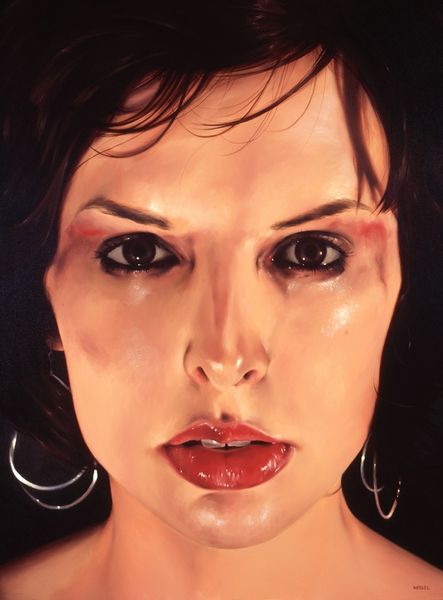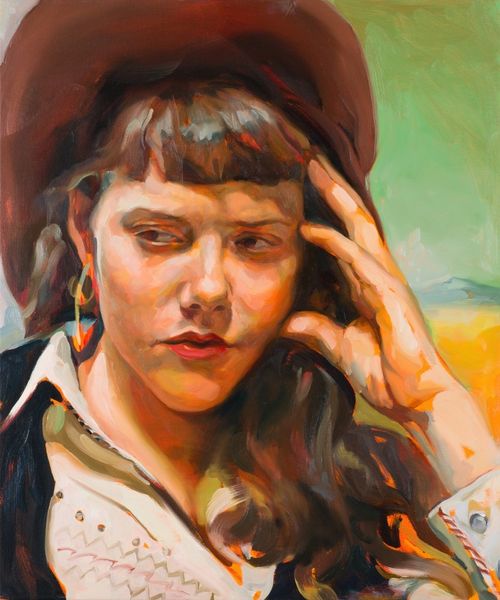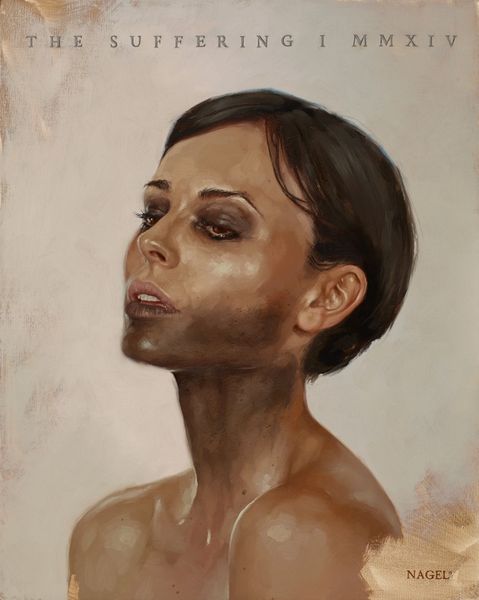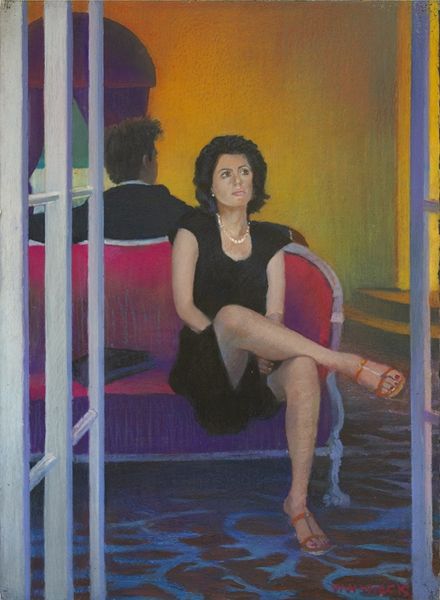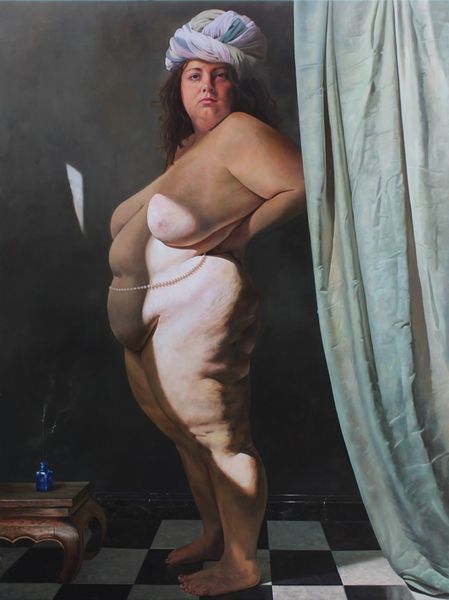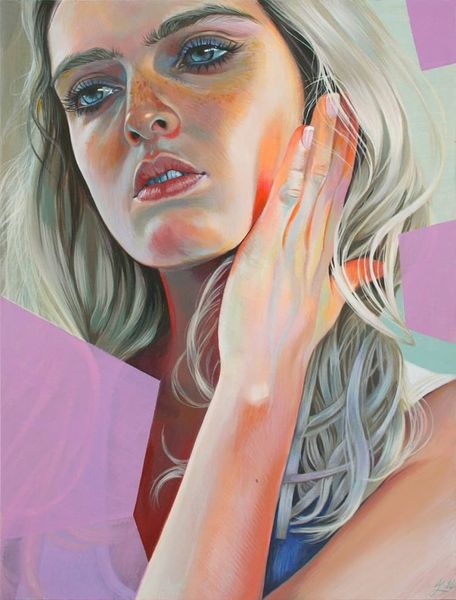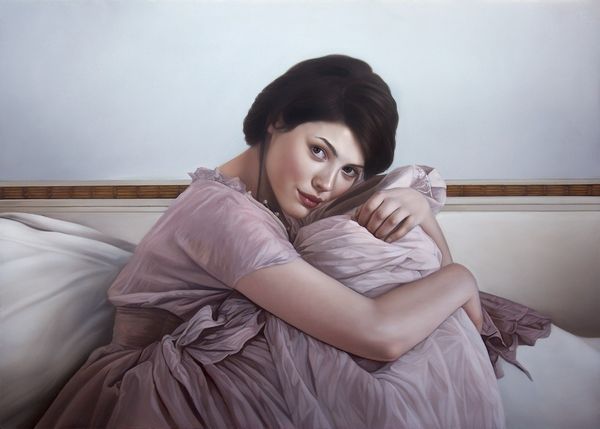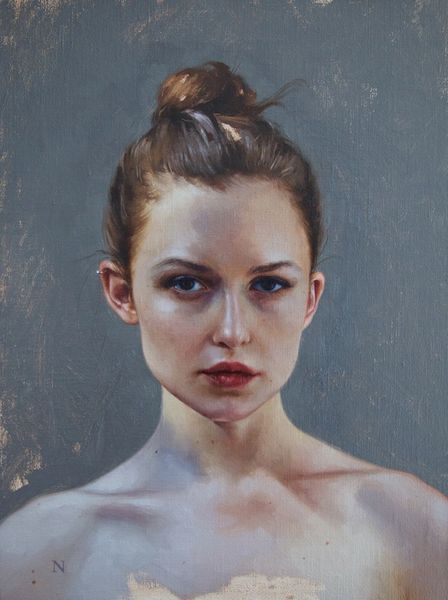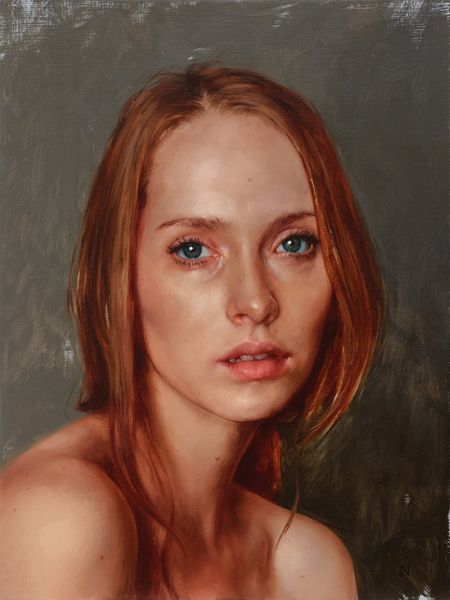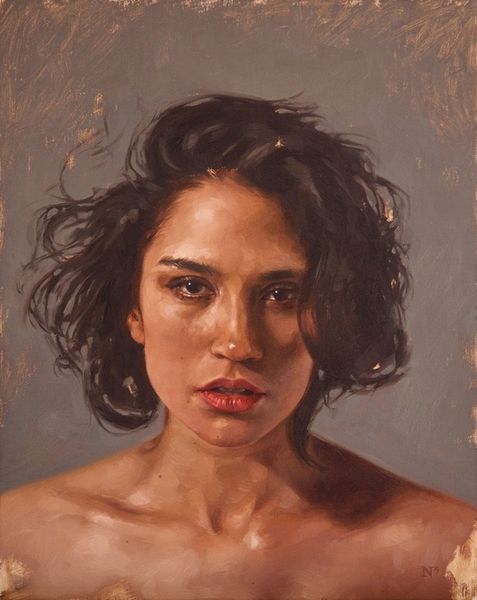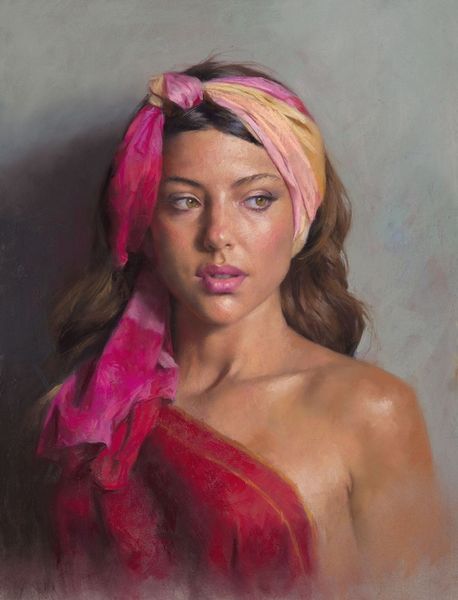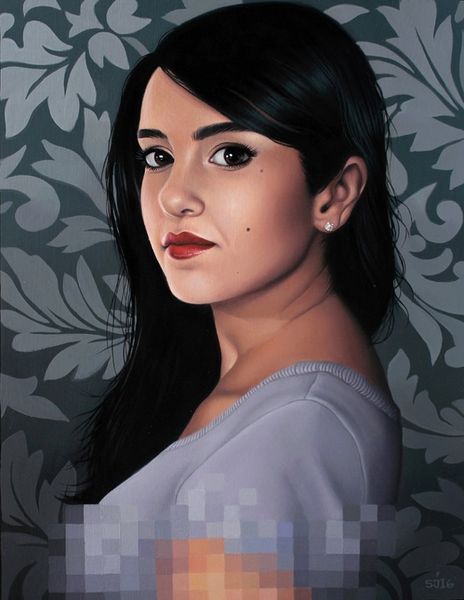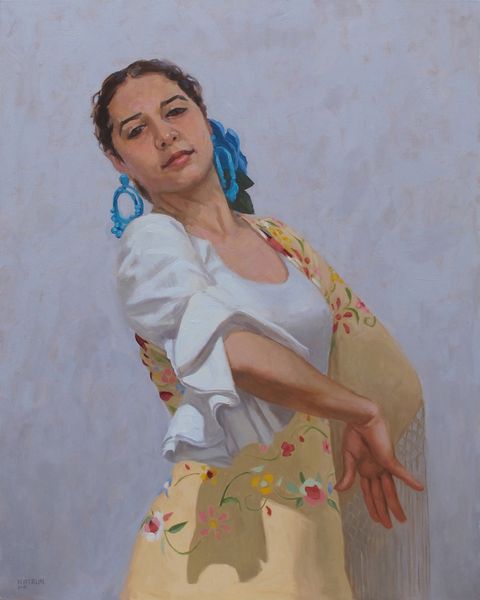
Copyright: Audrey Flack,Fair Use
Curator: Here we have Audrey Flack’s "Self-Portrait," painted in 1974. She’s known for her photorealist style and pioneering role in second-wave feminist art. Editor: My first impression is the overwhelming sense of observation. The slightly averted gaze suggests she is thinking or maybe is being captured at a spontaneous, private moment. The hyperrealism adds an unusual, and a strangely unsettling intensity. Curator: Absolutely. Flack's photorealism directly challenged the male-dominated art world. Before digital photography became widespread, the photorealists had to project photographs and make these incredible simulacra. Consider the power of a woman making monumental, almost hyper-real images of her face! Editor: What strikes me, beyond just its "realness", is that hand gesture— almost as though she is interrupted, trying to find a way into expression or caught unawares mid-thought. It feels active, communicative but I can't put my finger on exactly *what* she wants to say. Could it just be that the symbolic visual code doesn't fit for us any longer? Curator: Possibly, or perhaps it reflects the broader socio-political upheaval of the era. Second-wave feminism demanded recognition and representation. Flack seizes that representation on her terms. It goes against a kind of art market prejudice which had been dominant until that point. Editor: So her gaze away and open mouthed hints, at some deep level, at openness for new experiences. It also speaks to an openness to new insights; even to some anxiety for how womanhood might be lived and portrayed in that epoch. I also note a circular ring on the fourth finger of her right hand that appears as an orange bubble or planet. Curator: True. I wonder if her choice of "ordinary" presentation contributes to that reading too? No grand statement of luxury here – just an image in conversation with art and power structures as they existed at the time of the artwork's completion. The lack of glamour feels defiant and speaks of everyday life. Editor: Indeed, by facing up to what some viewers found challenging in womanhood in a changing, modern world - by confronting that head-on- she ensured it became unforgettable. It's not merely photorealistic – it is also powerful communication from a turbulent epoch.
Comments
No comments
Be the first to comment and join the conversation on the ultimate creative platform.
